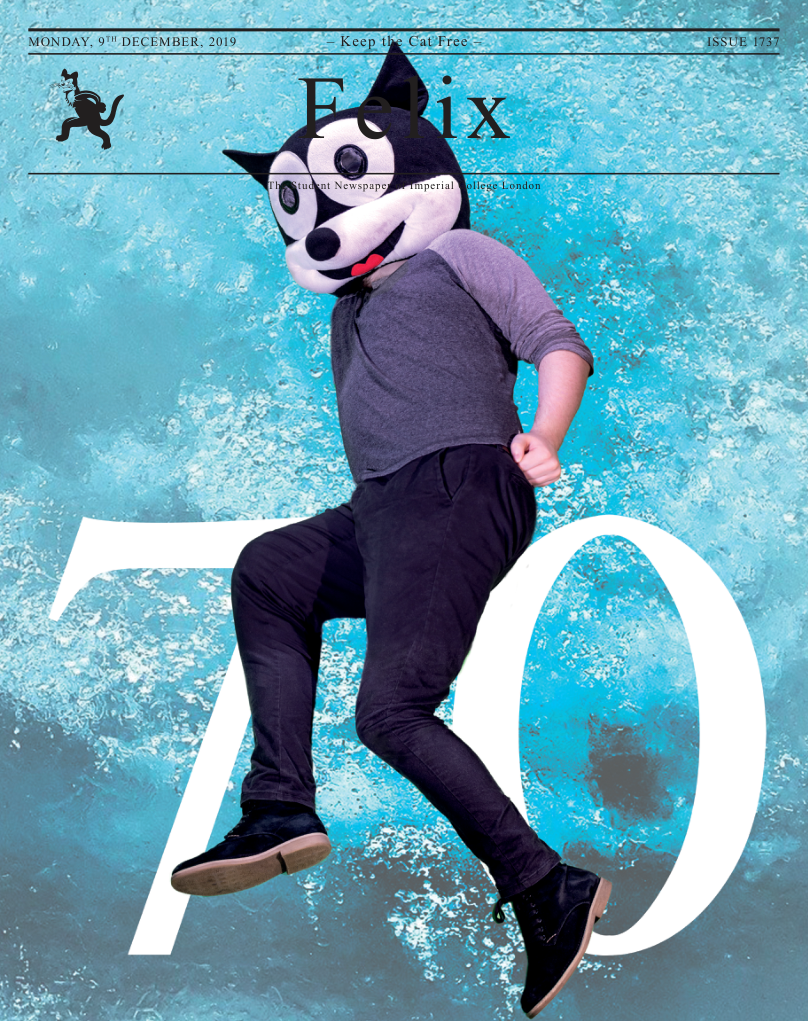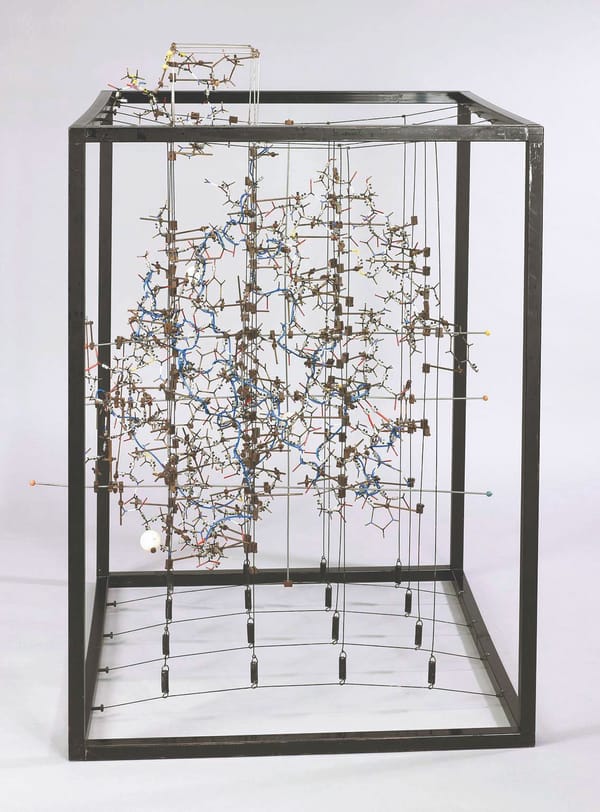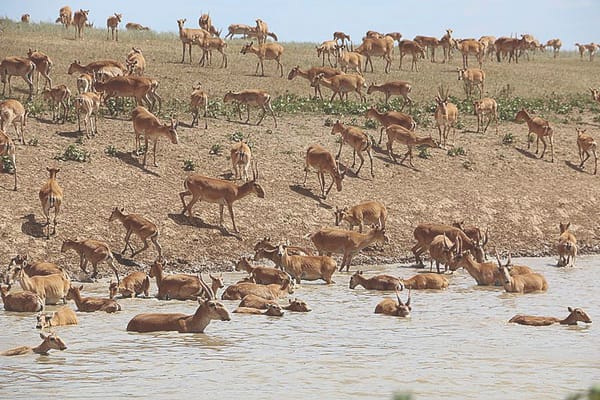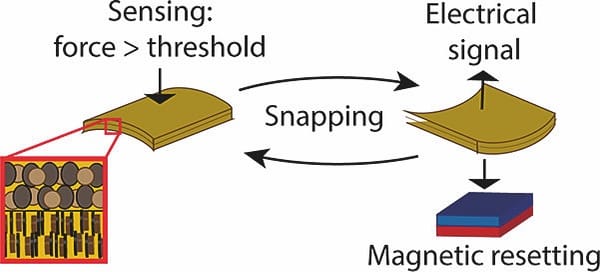70 Years of STEM Nobel Prizes & Fields Medals
From 1949 to the present day, here are 70 awards, one per year, given to Imperial and non-Imperial scientists alike to celebrate their achievements in the natural sciences and medicine

Below are 70 years worth of noteworthy awards in maths and science - but first, in recognition of our affiliated Imperial scientists, here’s a summary of our awardees & what they achieved:
1956: Cyril Norman Hinshelwood; Chemistry; for his research into the mechanism of chemical reactions
1958: Klaus Roth; Mathematics; solved the famous Thue-Siegel problem concerning the approximation to algebraic numbers by rational numbers and proved that a sequence with no three numbers in arithmetic progression has zero density
1963: Andrew Huxley; Physiology/Medicine; for his discovery concerning the ionic mechanisms involved in excitation and inhibition in the peripheral and central portions of the nerve cell membrane
1967: George Porter; Chemistry; for his study of extremely fast chemical reactions affected by disturbing the equilibrium by means of very short pulses of energy
1969: Derek Barton; Chemistry; for his contribution to the development of the concept of conformation and its application in chemistry
1971: Dennis Gabor; Physics; for his invention and development of the holographic method
1972: Rodney Robert Porter; Physiology/Medicine; for his discovery concerning the chemical structure of antibodies
1973: Geoffrey Wilkinson; Chemistry; for his pioneering work on the chemistry of the organometallic, so called sandwich compounds
1979: Abdus Salam, Sheldon; Physics; for his contributions to the theory of the unified weak and electromagnetic interaction between elementary particles, including, inter alia, the prediction of the weak neutral current
1986: Simon Donaldson; Mathematics; for his work on topology of four-manifolds, especially for showing that there is a differential structure on euclidean four-space which is different from the usual structure
2014: Martin Hairer; Mathematics; for his contributions to the theory of stochastic partial differential equations, in particular for the creation of a theory of regularity structures for such equations
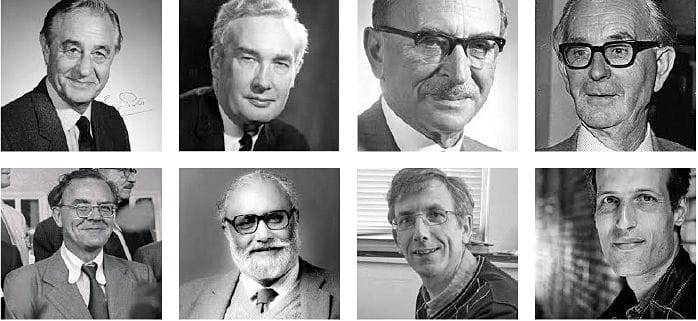
1949: Walter Rudolf Hess & Egas Moniz; Physiology/Medicine; for mapping the areas of the brain involved in the control of internal organs
1950: Cecil Frank Powell; Physics; for his development of the photographic method of studying nuclear processes and for the resulting discovery of the pion (pi-meson)
1951: Max Theiler; Physiology/Medicine; for the development of a vaccine against yellow fever
1952: Felix Bloch & Edward Mills Purcell; Physics; for their independent discovery of NMR
1953: Hans Adolf Krebs & Fritz Albert Lipmann; Physiology/Medicine; for the discovery of the Krebs and glyoxylate cycles
1954: Linus Pauling; Chemistry; for his research into the nature of the chemical bond and its application to the elucidation of the structure of complex substances
1955: Hugo Theorell; Physiology/Medicine; for discovering oxidoreductase enzymes and their effects
1956: Cyril Norman Hinshelwood & Nikolay Semenov; Chemistry; for their researches into the mechanism of chemical reactions
1957: Daniel Bovet; Physiology/Medicine; for the discovery of drugs that block the actions of specific neurotransmitters
1958: Klaus Roth; Mathematics (Fields Medal); solved the famous Thue-Siegel problem concerning the approximation to algebraic numbers by rational numbers and proved that a sequence with no three numbers in arithmetic progression has zero density
1959: Emilio G. Segrè & Owen Chamberlain; Physics; for the discovery of the antiproton, a subatomic antiparticle
1960: Willard Libby; Chemistry; for the development of radiocarbon dating
1961: Melvin Calvin; Chemistry; for the discovery of the Calvin cycle
1962: John Milnor; Mathematics (Fields’ Medal); for proving that a 7-dimensional sphere can have several differential structures, leading to the creation of the field of differential topology
1963: Andrew Huxley, John Carew Eccles & Alan Lloyd Hodgkin; Physiology/Medicine; for their discoveries concerning the ionic mechanisms involved in excitation and inhibition in the peripheral and central portions of the nerve cell membrane
1964: Dorothy Hodgkin; Chemistry; for the development of protein crystallography
1965: Sin-Itiro Tomonaga, Julian Schwinger & Richard Feynman; Physics; for the discovery of the renormalization method in quantum electrodynamics
1966: Robert S. Mulliken; Chemistry; for the elaboration of the molecular orbital method of computing the structure of molecules
1967: George Porter,Manfred Eigen & Ronald George Wreyford Norrish); Chemistry; for their studies of extremely fast chemical reactions, effected by disturbing the equilibrium by means of very short pulses of energy
1968: Robert W. Holley & Har Gobind Khorana & Marshall Warren Nirenberg; Physiology/Medicine; for describing the structure of alanine transfer RNA, and linking DNA and protein synthesis
1969: Derek Barton & Odd Hassel; Chemistry; for their contributions to the development of the concept of conformation and its application in chemistry
1970: John G. Thompson; Mathematics (Fields’ Medal); Proved jointly with W. Feit that all non-cyclic finite simple groups have even order
1971: Dennis Gabor; Physics; for his invention and development of the holographic method
1972: Rodney Robert Porter & Gerald Edelman; Physiology/Medicine; for their discoveries concerning the chemical structure of antibodies
1973: Geoffrey Wilkinson & Ernst Otto Fischer; Chemistry; for their pioneering work, performed independently, on the chemistry of the organometallic, so called sandwich compounds
1974: Albert Claude & Christian de Duve & George Emil Palade; Physiology/Medicine; for their innovations in electron microscopy and cell fractionation, laying the foundations of modern molecular cell biology
1975: David Baltimore & Renato Dulbecco & Howard Martin Temin; Physiology/Medicine; for work on oncoviruses and discovery of reverse transcriptase
1976: Burton Richter & Samuel C. C. Ting; Physics; for discovering the subatomic J/ψ particle.
1977: Rosalyn Sussman Yalow; Physiology/Medicine; for development of the radioimmunoassay technique
1978: Pierre Deligne; Mathematics (Fields’ Medal); Gave solution of the three Weil conjectures concerning generalizations of the Riemann hypothesis for finite fields.
1979: Abdus Salam, Sheldon Lee Glashow & Steven Weinberg; Physics; for their contributions to the theory of the unified weak and electromagnetic interaction between elementary particles, including, inter alia, the prediction of the weak neutral current
1980: Walter Gilbert & Frederick Sanger; Chemistry; for pioneering work in devising methods for determining the sequence of nucleotides in a nucleic acid & development of the Sanger sequencing method
1981: Kenichi Fukui & Roald Hoffmann; Chemistry; for their independent investigations into the mechanisms of chemical reactions
1982: Kenneth G. Wilson; Physics; for his work on phase transitions—illuminating the subtle essence of phenomena like melting ice and emerging magnetism
1983: Barbara McClintock; Physiology/Medicine; for the discovery of genetic transposition
1984: Carlo Rubbia & Simon van der Meer; Physics; for the discovery of the W and Z particles at CERN
1985: Klaus von Klitzing; Physics; for discovery of the integer quantum Hall effect
1986: Simon Donaldson; Mathematics (Fields Medal) ; for his work on topology of four-manifolds, especially for showing that there is a differential structure on euclidean four-space which is different from the usual structure
1987: Susumu Tonegawa; Physiology/Medicine; for his discovery of the genetic mechanism that promotes antibody diversity in the adaptive immune system
1988: Johann Deisenhofer, Robert Huber & Hartmut Michel; Chemistry; for determination of the first crystal structure of an integral membrane protein, a membrane-bound complex of proteins and co-factors that is essential to photosynthesis
1989: J. Michael Bishop & Harold E. Varmus; Physiology/Medicine; for discovering the first human oncogene, c-Src and then cellular origin of retroviral oncogenes
1990: Vaughan F. R. Jones; Mathematics (Fields Medal); for his discovery of an unexpected link between the mathematical study of knots and statistical mechanics, a form of mathematics used to study complex systems with large numbers of components
1991: Richard R. Ernst; Chemistry; for his contributions towards the development of Fourier transform Nuclear Magnetic Resonance (NMR) spectroscopy
1992: Edmond H. Fischer & Edwin G. Krebs; Physiology/Medicine; for describing how reversible phosphorylation works as a switch to activate proteins and regulate various cellular processes
1993: Kary Mullis; Chemistry; for his invention of the polymerase chain reaction (PCR) technique
1994: Alfred G. Gilman & Martin Rodbell; Physiology/Medicine; for their discovery of G-proteins and the role of these proteins in signal transduction in cells
1995: Martin Lewis Perl; Physics; for his discovery of the tau lepton
1996: Robert F. Curl Jr, Harry Kroto & Richard Smalley; Chemistry; for the discovery of a new nanomaterial form of carbon, buckminsterfullerene
1998: Richard Borcherds; Mathematics (Fields Medal); for his work on the introduction of vertex algebras, the proof of the Moonshine conjecture and for his discovery of a new class of automorphic infinite products.
1999: Gerard ‘t Hooft & Martinus J. G. Veltman; Physics; for elucidating the quantum structure of electroweak interactions
2000: Arvid Carlsson, Paul Greengard & Eric Kandel; Physiology/Medicine; for their discoveries concerning signal transduction in the nervous system, in particular dopamine
2001: Eric Allin Cornell, Wolfgang Ketterle & Carl Wieman; Physics; for synthesis of the first Bose–Einstein condensate
2002: Laurent Laffourgue; Mathematics (Fields medal); for his proof of the Langlands correspondence for the full linear groups GLr (r≥1) over function fields.
2003: Paul Lauterbur & Peter Mansfield; Physiology/Medicine; for their work which made magnetic resonance imaging (MRI) possible
2004: Aaron Ciechanover, Avram Hershko & Irwin Rose; Chemistry; for the discovery of ubiquitin-mediated protein degradation
2005: John L. Hall & Theodor W. Hänsch; Physics; for contributions to the development of laser-based precision spectroscopy, including the optical frequency comb technique
2006: Andrew Fire & Craig Mello; Physiology/Medicine; for the discovery of RNA interference (RNAi)
2007: Albert Fert & Peter Grünberg; Physics; for their discovery of giant magnetoresistance, which brought about a breakthrough in gigabyte hard disks
2008: Osamu Shimomura, Martin Chalfie & Roger Y. Tsien; Chemistry; for the discovery and development of green fluorescent protein (GFP)
2009: Elizabeth Blackburn & Carol W. Greider; Physiology/Medicine; for the discovery of telomerase, the enzyme that replenishes the telomere
2010: Robert G. Edwards; Physiology/Medicine; for the development of in vitro fertilization
2011: Saul Perlmutter, Adam G. Riess & Brian Schmidt; Physics; for providing evidence that the expansion of the universe is accelerating
2012: John B. Gurdon & Shinya Yamanaka; Physiology/Medicine; for the discovery that mature cells can be converted to stem cells, creating iPS cells
2013: James E. Rothman, Randy W. Schekman & Thomas C. Südhof; Physiology/Medicine; for their groundbreaking work on cell membrane vesicle trafficking
2014: Martin Hairer; Mathematics (Fields Medal); for his contributions to the theory of stochastic partial differential equations, in particular for the creation of a theory of regularity structures for such equations
2015: Tomas Lindahl, Paul L. Modrich & Aziz Sancar; Chemistry; for mechanistic studies of DNA repair
2016: David J. Thouless, Duncan Haldane & John M. Kosterlitz; Physics; for theoretical discoveries of topological phase transitions and topological phases of matter
2017: Jacques Dubochet, Joachim Frank & Richard Henderson; Chemistry; for the development of single-particle cryo-electron microscopy (cryo-EM)
2018: James P. Allison & Tasuku Honjo; Physiology/Medicine; for their discovery of cancer therapy by inhibition of negative immune regulation
2019: Michel Mayor & Didier Queloz; Physics; for the discovery of an exoplanet orbiting a solar-type star

